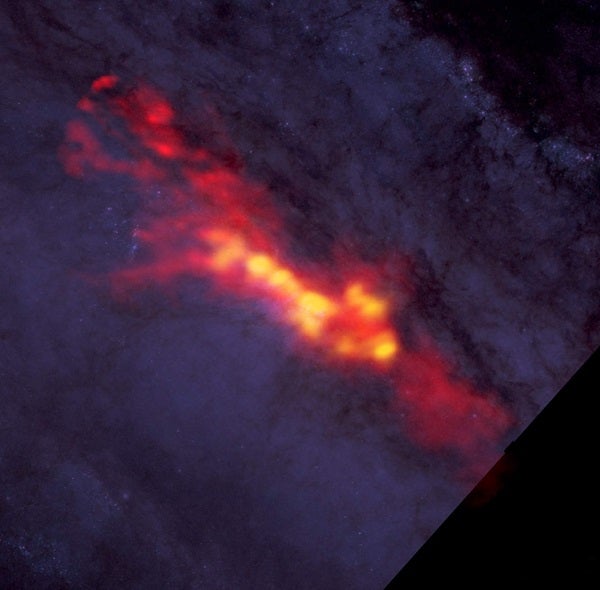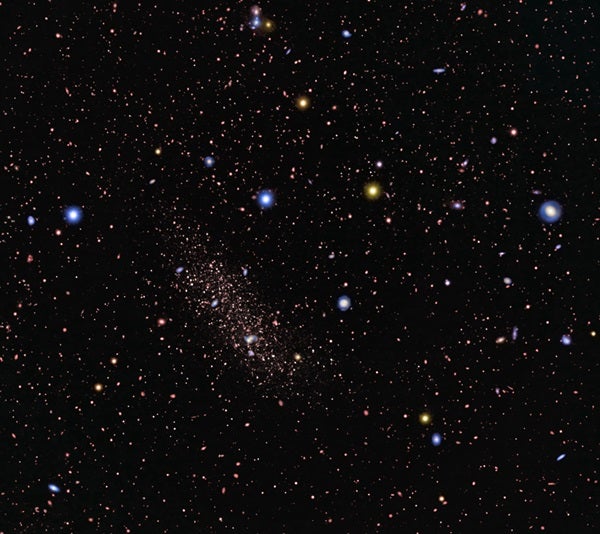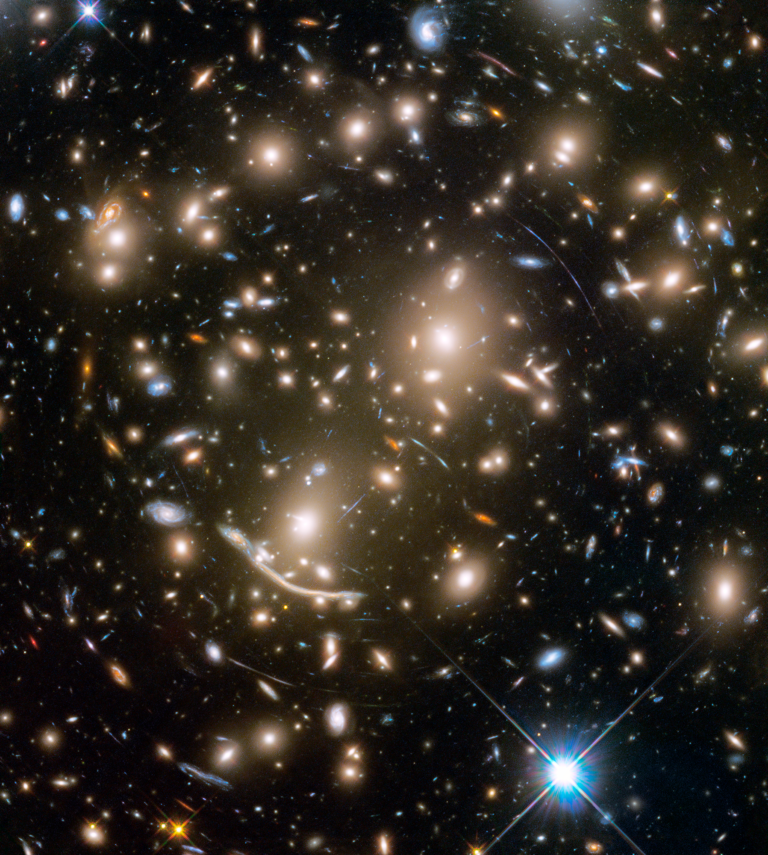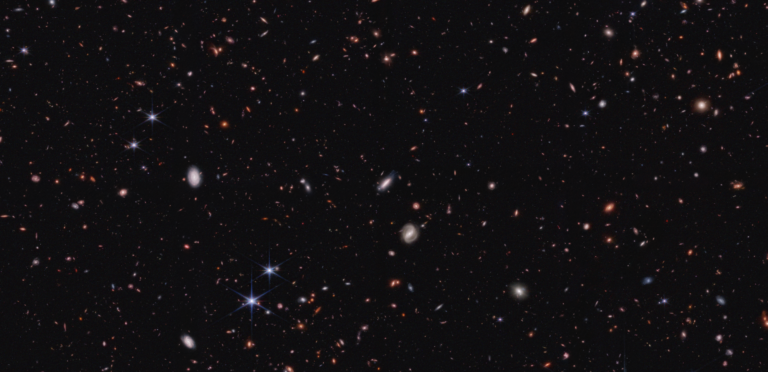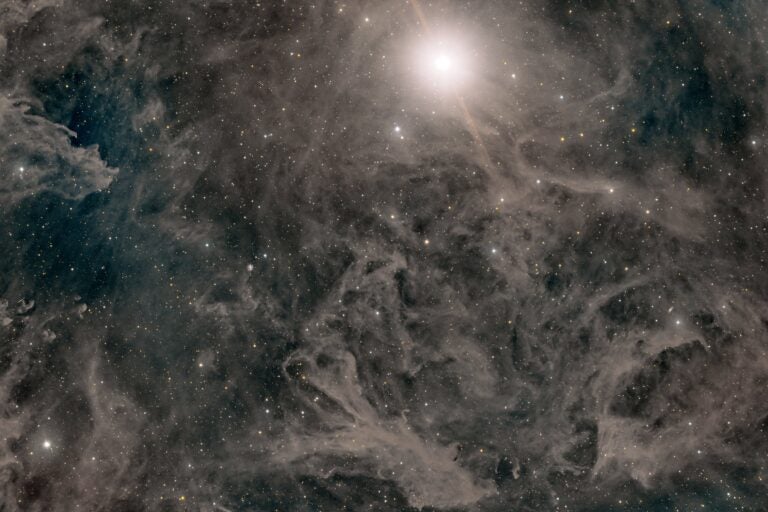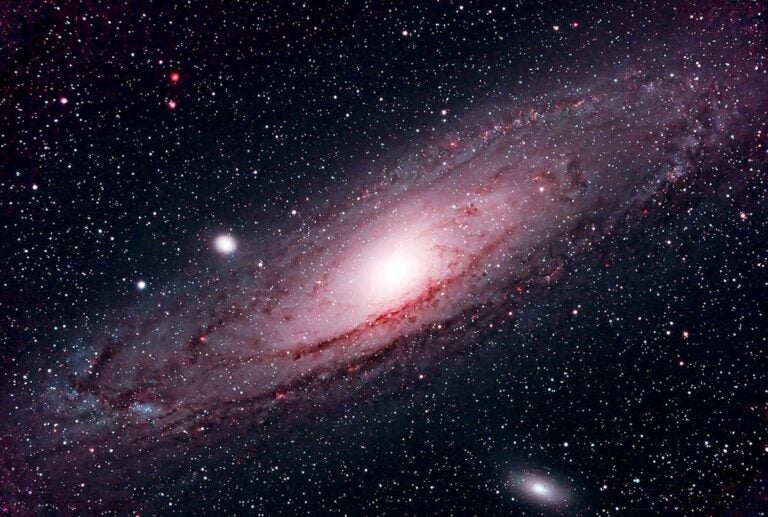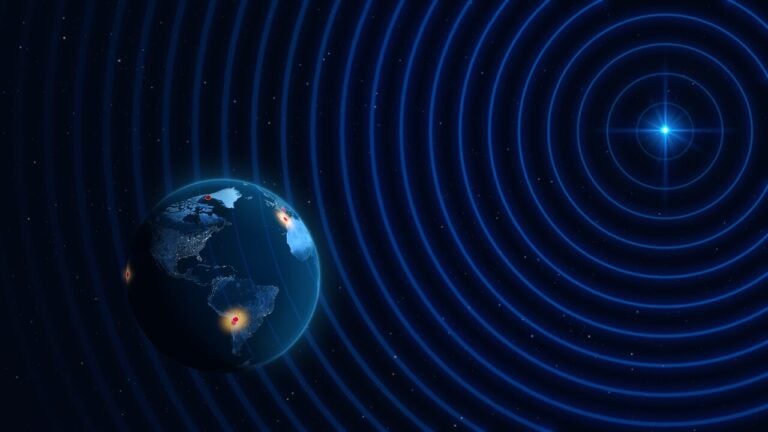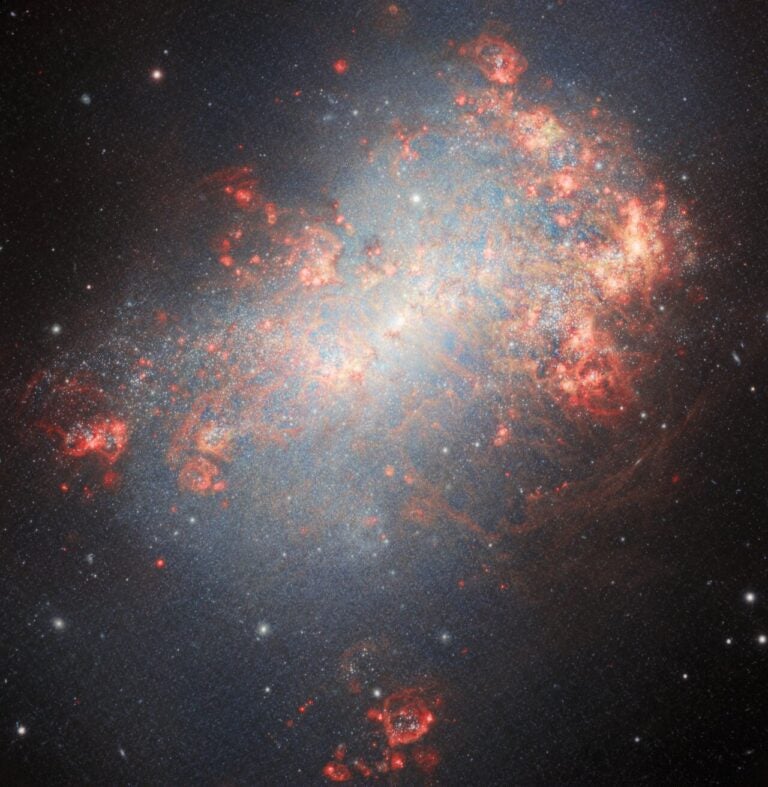“The outer regions of giant galaxies like our own Milky Way appear to be a jumble of debris from hundreds of smaller galaxies that fell in over time and splashed into smithereens,” said Romanowsky. “These dwarfs are considered building blocks of the giants, but the evidence for giants absorbing dwarfs has been largely circumstantial. Now we have caught a pair of galaxies in the act of a deadly embrace.”
The two objects in the study are NGC 253, also called the Silver Dollar galaxy, and the newly discovered dwarf NGC 253-dw2. They are located in the Southern constellation Sculptor at a distance of 11 million light-years from Earth and are separated from each other by about 160,000 light-years. The dwarf has an elongated appearance that is the hallmark of being stretched apart by the gravity of a larger galaxy.
The interplay between the two galaxies may resolve an outstanding mystery about NGC 253, as the giant spiral shows signs of being disturbed by a dwarf. The disturber was previously unseen and presumed to have perished, but now the likely culprit has been found. “This looks like a case of galactic stealth attack,” said Gustavo Morales of Heidelberg University. “The dwarf galaxy has dived in from the depths of space and barraged the giant, while remaining undetected by virtue of its extreme faintness.”
The discovery of NGC 253-dw2 has an unusual pedigree. It began with a digital image of the giant galaxy taken by astrophotographer Michael Sidonio using a 12-inch diameter amateur telescope in Australia. Other members of the international team noticed a faint smudge in the image and followed it up with a larger 30-inch amateur telescope in Chile led by Johannes Schedler. The identity of the object was still not clear, and it was observed with the 8-meter Subaru Telescope on the summit of Maunakea in Hawaii, in December 2014. “In the first image, we weren’t sure if there was really a faint galaxy or if it was some kind of stray reflection,” said David Martínez-Delgado, also from Heidelberg University. “With the high-quality imaging of the Suprime-Cam instrument on the Subaru Telescope, we can now see that the smudge is composed of individual stars and is a bona fide dwarf galaxy. This discovery is a wonderful example of fruitful collaboration between amateur and professional astronomers.”

